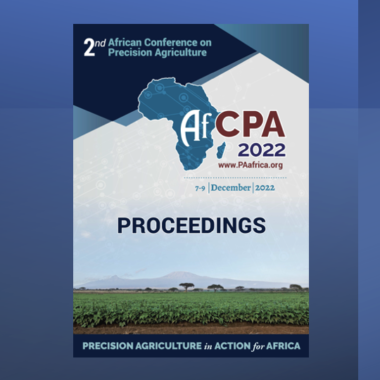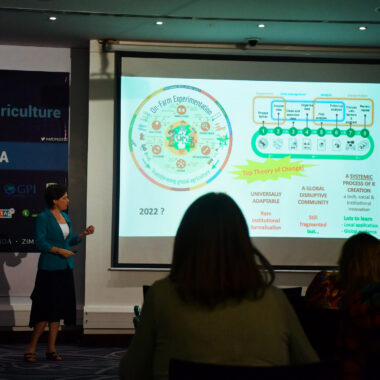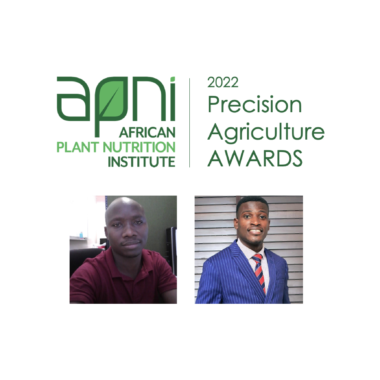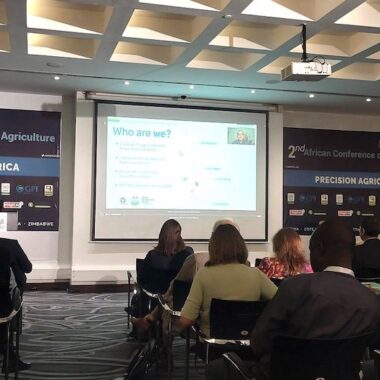Adapting African Farming Systems to Climate Change using Precision Agriculture
One objective of climate change adaptation in African agriculture is to deliver strategies that allow growers to manage increasing uncertainty. One way to accomplish this is through the introduction of precision or digital farming approaches into African smallholder systems. To many, precision agriculture (PA) seems irrelevant within the African context where so many growers rely on subsistence farming. This assertion can, and should be, strenuously challenged as the basic principle of precision agriculture – to provide spatial and temporal information to reduce uncertainty – is independent of technology and scale. There are many research studies that demonstrate the lack of correlation between farm size and spatial variability for various soil and crop factors. Fields as small as one hectare have been shown to have distinctively different production potentials within the field due to both inherent and man-made variation. The principles of using information about this variation to reduce uncertainty has much to offer the smallholder farmer. In fact, some of the principles within PA may prove essential to the sustainability of African agriculture in the face of increasing pressures and risks related to climate change. One of the strategies in PA is to make more in-season decisions using remote sensing and other methods. Working in-season and using real-time crop-derived or weather-related information allows the grower to be more adaptive in the face of the increasingly uncertain temporal variability associated with climate change.
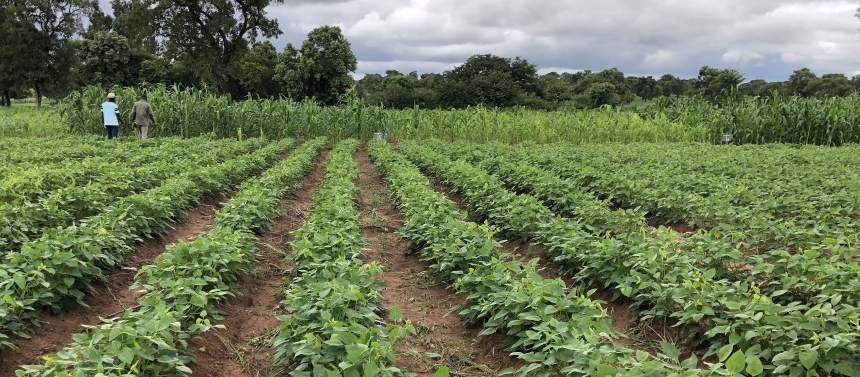
Working in-season and using real-time crop-derived or weather-related information allows the grower to be more adaptive in the face of the increasingly uncertain temporal variability associated with climate change (K. Amouzou photo)
One of the misconceptions about PA that leads to the conclusion that it is irrelevant for the smallholder farmer is that the high-tech, mechanized tools often associated with PA as seen in the developed world are unattainable. While it is true that some technologies as currently offered don’t fit into the smallholder context, PA is so much more than just about tools and technologies. It’s a philosophy and a holistic management strategy that uses tools and a wide range of technologies (from very simple to very sophisticated) to collect, analyze, and interpret site-specific data that guide targeted actions and better decisions on the farm. Another commonly stated reason for slow adoption of PA is that its benefits are insufficient to justify the costs. It’s often difficult to demonstrate the return on investment for some of the approaches in PA. This statement is true for all regions of the world, so obviously, this seems to preclude any possibility of successful adoption in Africa, where profitability is much lower than in developed economies. However, the basic purpose of PA – to use site-specific information to reduce farming uncertainty – could be considered far from being a luxury and could be viewed as essential to accelerate change in Africa.
“…PA is so much more than just about tools and technologies. It’s a philosophy and a holistic management strategy that uses tools and a wide range of technologies (from very simple to very sophisticated) to collect, analyze, and interpret site-specific data that guide targeted actions and better decisions on the farm.”
Considerable evidence exists that African farmers already identify and use variation at scales relevant for management. Researchers have worked with smallholder farmers who were asked to illustrate crop yield variation on their farm. They followed the farmer’s sketch with a detailed spatial analysis of soil fertility and grain yield and found that the farmer’s estimate was right in line with what was measured. Smallholder farmers possess a vast body of knowledge about their farms but this knowledge is largely theoretical rather than empirical. This lack of process-based knowledge obstructs sound decision-making in variable or changing conditions. Therefore, opportunities exist for the successful influx of site-specific information collected using PA to manage variation; thus, increasing the efficacy of local knowledge.
Several valuable pieces of the foundation of PA for African agriculture have already been laid over the past 10-15 years. Various groups have undertaken digital soil mapping projects, low-cost or free satellite imagery is available, and the number of African farmers that are digitally connected has increased immensely over the past few years. In addition, more and more affordable technology options for acquiring and communicating information at the smallholder scale are being developed. Now is the time to build on this foundation the processes that lead from information availability to information-driven solutions that can be delivered to the smallholder farmer. There are still knowledge gaps and work to be done, but the world is in the midst of a digital revolution in agriculture and Africa cannot be left behind.
Adapting African agriculture in the face of climate change demands more informed activities to reduce the uncertainties of decisions. In the case of PA, information has potential value to reduce the likelihood of decision errors. Which in the case of the African smallholder farmer, the risk associated with making the wrong decision is magnified compared with that of a larger operator. The tools, technologies, and information strategies found in PA (when properly scaled within the African context) can help reduce this risk.
Contributor: Steve Phillips, Principal Scientist, APNI

